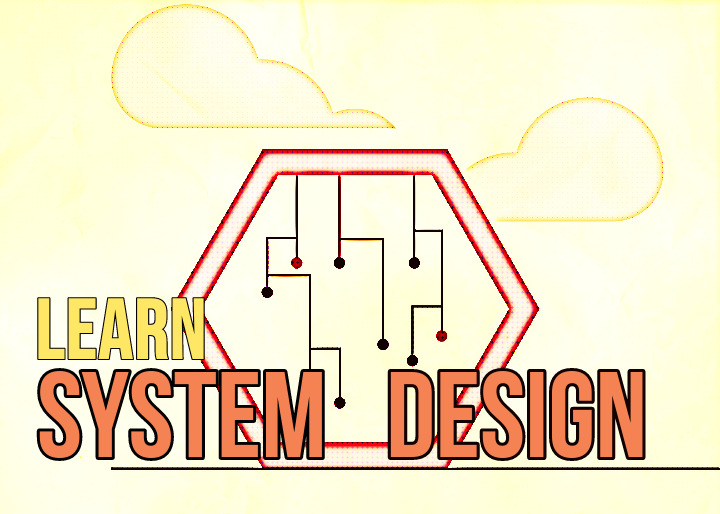When you want to ace the programming interview, it’s hard to know what system design course to take.
Maybe you’ve created system design projects. Or maybe even successfully deployed system design on a small scale.
This is good experience to have, but it doesn’t always help with the interviews.
This post contains affiliate links. I may receive compensation if you buy something. Read my disclosure for more details.
With system design, you need to define:
- architecture
- modules
- interfaces
- data
- components
But when interviewing at a FAANG, they’ll want you to effectively create a system design that’s:
- reliable
- scalable
- maintainable

In addition, you’ll need to differentiate between functional and non-functional requirements.
On a large scale.
And that can be difficult if you’ve never done it before.
Or even if you have.
Because of the unstructured nature of system design interviews, even seasoned engineers can get stuck.
When there’s no standard answer, how do you know what’s right?
Not to worry.
We’ve been on the lookout for the best system design course out there. One that will help you deeply understand system design and help you prepare for the interview.
For these reasons, we considered everything from inclusion of system design fundamentals all the way up to designing large scale systems.
The result?
Despite our efforts, we could not pick just one system design course.
So we narrowed it down to 2:
Grokking the System Design Interview by Educative
SystemsExpert: Ace the Systems Design Interviews by AlgoExpert
🥊 Today they’re competing head to head in an all-out, no holds barred comparison.
And it’s up to you to decide who wins. 🔔
🍥 Grokking the System Design Interview

⚠️ Level: Beginner
| Lessons | 31 |
| Playgrounds | 2 |
| Code Snippets | 22 |
| Illustrations | 102 |
FAANG companies want to be confident in your ability to work with complex systems. Therefore, system design questions at interviews have become standard practice.
Grokking the System Design Interview by Educative is a text-based course.
And it was created by hiring managers who have worked at Google, Facebook, Microsoft and Amazon. As a result, this course contains some of the most frequently asked questions at FAANG interviews.
This course is separated into two sections: System Design Problems and Glossary of System Design Basics.
🍥 System Design Problems includes:
- Dropbox
- Facebook Messenger
- YouTube
- Netflix
- Ticketmaster
And that’s just to name a few.
For each topic, you’re given step-by-step guidance. From there, you work on a series of challenges.
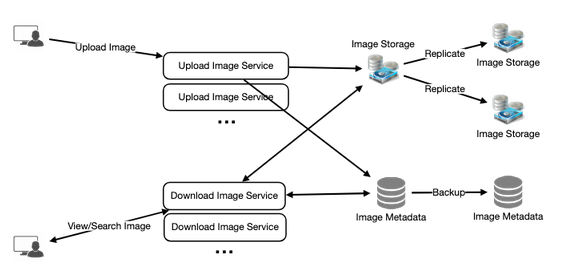
What do the lessons look like?

Let’s take a look at their Designing Instagram challenge section. By becoming familiar with the details of each problem, you can better understand what to expect in this system design course.
Designing Instagram:
| 1. What is Instagram | in depth definition of the photo-sharing service |
| 2. Requirements and Goals of the System | functional and non-functional requirements |
| 3. Design Considerations | practicality, low latency, reliability |
| 4. Capacity Estimation and Restraints | total daily and decade-long space requirements based on uploaded x pictures, x size, x customers |
| 5. High Level System Design | upload photos and view/search photos scenarios |
| 6. Database Schema | data storage processes for Photo, User, UserFollow |
| 7. Data Size Estimation | decade-long storage needs scenario based on data input for Photo, User, UserFollow |
| 8. Component Design | cache served photo reads, separation of read and write requests |
| 9. Reliability and Redundancy | multiple file copies on multiple servers to avoid lost files |
| 10. Data Sharding | partitioning based on UserID, generate PhotoIDs, partitioning scheme issues |
| 11. Ranking and News Feed Generation | fetching most recent, popular, and relevant photos using pull, push, and hybrid |
| 12. News Feed Creation with News Sharded Data | photo creation time on PhotoID using epoch time |
| 13. Cache and Load Balancing | push user content using geographically distributed photo cache servers and content delivery networks (CDNs) |
From here we move onto the glossary. It contains all terminology you should feel completely comfortable with by the end of this course.
Glossary of System Design Basics goes over:
- characteristics of distributed systems
- load balancing
- caching
- data partitioning
- redundancy and replication
- SQL vs. NoSQL
And more.
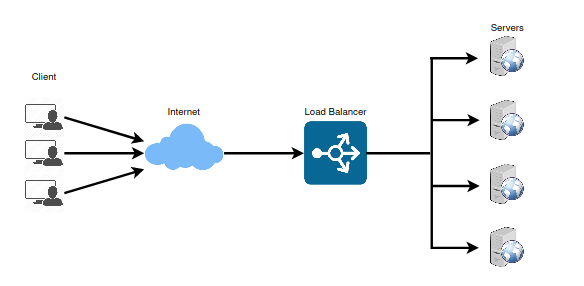
🏫 Lesson Example
With a thorough understanding of the fundamentals, you can solve larger-scale problems.
To better understand their approach to system design basics, let’s look at Grokking the System Design Interview’s section on Load Balancing:
| Load Balancing | definition and functions |
| Benefits of Load Balancing | faster service, less downtime, predictive analytics, etc. |
| Health Checks of Load Balancing Methods | least connection, least response time, least bandwidth, round robin, weighted, IP hash |
| Redundant Load Balancers | cluster formation with additional load balancers |
💰 Cost:
You can buy the course for about $80.
Or get full annual access to over 130 Educative courses for about $21 per month.
You can check out the Grokking the System Design Interview course here.
Want to know even more? Check out our extensive course review here.
⚛️ SystemsExpert: Ace the Systems Design Interview
The SystemsExpert: Ace the Systems Design Interviews video course is the newest addition to Clément Mihailescu’s platform AlgoExpert.
Having previously worked at Facebook and Google, Clément knows what happens at FAANG interviews.
And he wants to help you prepare for them.
Video courses are beneficial because they reduce cognitive overload and maximize retention. And with hours of in-depth video explanations, SystemsExpert is great for visual learners.
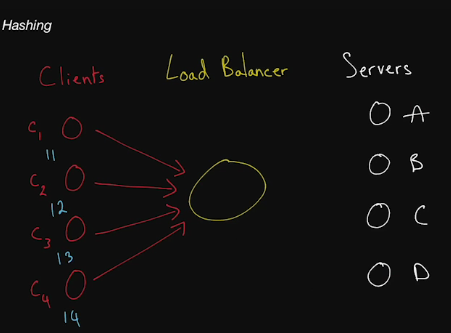
What should I expect to learn?
SystemsExpert: Ace the Systems Design Interviews contains 25 learning sections. They include:
| 1.Introduction | 2. What are design fundamentals? | 3. Client-Server Model |
| 4. Network Protocols | 5. Storage | 6. Latency and Throughput |
| 7. Availability | 8. Caching | 9. Proxies |
| 10. Load Balancers | 11. Hashing | 12. Relational Databases |
| 13. Key-Value Stores | 14. Replication and Sharding | 15. Leader Election |
| 16. Peer-to-Peer Networks | 17. Polling and Streaming | 18. Configuration |
| 19. Rate Limiting | 20. Logging and Monitoring | 21. Publish/Subscribe Pattern |
| 22. MapReduce | 23. Specialized Storage Paradigms | 24. Security and HTTPS |
| 25. API Design |
This system design course also has 13 questions with in-depth mock interview solutions. And it will help you prepare for realistic interview scenarios.
In addition, you’ll work on live code examples using a 4-pane workspace which includes the prompt, a scratchpad, video solution and solution walkthrough.
How are the lessons laid out?
Well, let’s take a look at the Proxies section to find out.
Before watching the video, familiarize yourself with the 3 brief text sections:
| Proxies | in depth definition and examples |
| Prerequisites | be familiar with clients and servers |
| Key Terms for this lesson | forward proxy, reverse proxy, Nginx |
From there, watch the 17-minute video. In this case, it’s filled with on-screen progressive diagrams of forward and reverse proxies.
And how clients and servers interact with each.
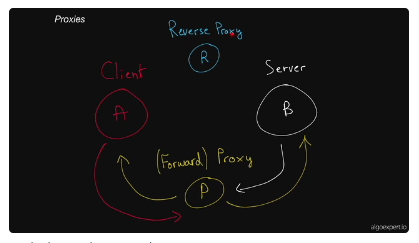
Note: Always take notes! There’s a lot of valuable information in here you’ll want to jot down.
The Proxies video covers:
- real-world examples of proxies with progressive diagrams
- primary proxies (forward and reverse) and properly identifying them
- functions of proxies
- server/client relationships with forward and reverse proxies
- source IP addresses
- restricted server access using forward proxies
- reverse proxies with complex systems
- reverse proxy configurations: load balancing, logging, caching, filter requests
- simple server performing requests
- Nginx web server as a reverse proxy
- header settings
- forwarding requests
- declaring backend servers
And much more.
SystemsExpert is regularly updated.
New in October 2020!
SystemsExpert now has a 50-question quiz and a systems design certificate.
💰 Cost:
You can buy the course for about $79 annually.
Or get full access to AlgoExpert and SystemsExpert for about $139 annually.
Want to know more about AlgoExpert? Check out our full review here.
You can get SystemsExpert: Ace the Systems Design Interviews course here. Be sure to use our coupon code realtoughcandy for 10% off!
Conclusion
Grokking the System Design Interview and SystemsExpert: Ace the Systems Design Interview have helped countless people get hired.
And they can help you, too.
So, which system design course do we like better?
It all depends on your learning style.
If you’re a visual learner, SystemsExpert: Ace the Systems Design Interview is the course is for you.
But if you like to follow along with ample reading, Grokking the System Design Interview is the way to go.
Up Next: 52 Insanely Useful Web Developer Tools & Resources for Newbies
What is the best system design course to prepare for FAANG interviews?
We couldn’t pick just one best system design course to prepare for FAANG interviews. Instead, we picked two. 1. Grokking the System Design Interview is a text-based course by Educative. And it was developed by previous employees of Facebook, Amazon, Microsoft and Google. So they know what questions are going to be asked, and included some in this course. You can buy the course for about $80, or get an annual subscription to the entire Educative platform for about $21 per month. 2. SystemsExpert: Ace the Systems Design Interview is a video-based course on Clément Mihailescu’s platform AlgoExpert. With hours of video, Clément uses his experiences working for Google and Facebook to prepare you for FAANG interviews. You can purchase the course for about $60, or bundle with AlgoExpert for a discount.
What’s the difference between the system design course Grokking the System Design Interview and SystemsExpert: Ace the Systems Design Interview?
The main difference between Grokking the System Design Interview and SystemsExpert: Ace the Systems Design Interview is the learning style. Whereas the Grokking the System Design Interview system design course is heavily text-based, SystemsExpert: Ace the Systems Design Interview focuses largely on video learning, with hours of video. Both system design courses have helped people land FAANG careers. It comes down to your personal learning preference. Your decision should be made based on whether you’re better learning text-based materials, or retaining information better with video learning.
How do I know if I need a system design course?
With system design, you need to define architecture, modules,
interfaces, data and components. But when interviewing at a FAANG, they’ll want you to effectively create a system design that’s reliable, scalable and maintainable. In addition, you’ll need to differentiate between functional and non-functional requirements. On a large scale. And that can be difficult if you’ve never done it before. Or even if you have.
Because of the unstructured nature of system design interviews, even seasoned engineers can get stuck. A system design course will help prepare you for FAANG interviews. And with questions that are actually asked at FAANG companies. With a system design course, you’ll learn how to think like the interviewer, and answer how they expect you to. Grokking the System Design Interview and SystemsExpert: Ace the Systems Design Interview have helped countless people get hired. And they can help you, too.
